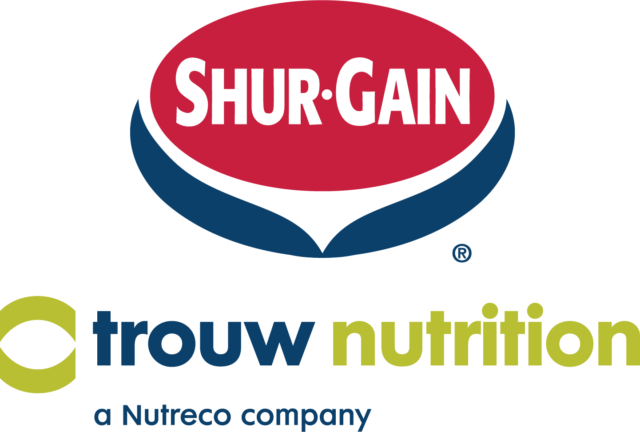To read this article in Spanish click here
The milking parlor is where you harvest your crop. All your effort in breeding, feeding and herd management shows up in the parlor. I often encourage employees by reminding them that they work in the "most important place on the dairy."
Do you know how well your parlor is functioning? Are you getting the most out of it and your cows? As I travel the country helping dairy producers become more efficient at milking cows, I have noticed a trend. Producers tell me they want to harvest as much milk as possible in the least amount of time; yet rarely do I see a producer invest much time in the parlor!
Conversely, I spend 90% of my time in milking parlors. What I have noticed is that a little observation combined with small changes yields big results. Here are some examples of big improvements in parlors that came from basic observations and small changes.
Appropriate timing
During a visit to a 5,000-cow dairy in Wisconsin that milks part of the herd through a double-50 parallel, I observed employees attaching units immediately behind the employees that were prepping teats with an automated brush. I noticed there was not sufficient milk flow in the claw upon attachment with this routine. This herd was producing in the high-90-pound range and running a somatic cell count (SCC) in the 90,000s. By all measures from the outside, they were doing everything right. Yet, when I observed the employees and then the parlor data, I noticed the average duration was close to five minutes and the two-minute milk was in the low 40% range. The lag time was obviously too short.
In conjunction with the manager, we decided to require at least four cows between the employees operating the cow prep brushes and the employees attaching units. Almost immediately, the percentage of milk in the first two minutes went from 42% to 50% while durations went from 4.9 minutes to 4.2 minutes. I expect the milk flow and duration will continue to improve as the cows become more accustomed to the routine. This small change will also improve SCC and cases of mastitis over time as teat ends improve due to less exposure to vacuums and fewer pulses during each milking. With a slight change to the routine, we immediately gained pounds per minute and shorter durations, and in time we will gain even more.
The importance of forestripping
On a 3,000-cow dairy in South Dakota milking in a double-45 parallel, I observed employees stripping each teat one time, instead of the required three strips per teat. We held an employee meeting and explained what happens when cows are well stimulated with a proper prep routine. We required them to do the routine correctly. We took questions and generally encouraged them to do a better job. The next milking, we saw the parlor go from less than five turns per hour to almost six. The SCC also improved significantly.
By simply requiring the employees to follow the routine, we gained turns per hour and lower SCC.
Pre- and post-dip
During a visit to a 2,000-cow dairy in Colorado milking in a double-30 parallel, I observed the employees were not applying pre- or post-dip as required. Employees were having trouble seeing the teats well due to poor lighting. The manager and I decided to spray the pre- and post-dip instead of using dip cups, therefore making it easier for the employees to cover all the teats well even though they could not see them perfectly. This mechanical change combined with a week of hands-on daily attention and encouragement in the parlor caused this dairy to go from a SCC of 300,000 to consistently running around 160,000. The mastitis pen has also shrunk significantly.
We simply changed the dip application method and invested regular time working hands-on with the employees in the parlor.
Equipment checks
On a 20,000-cow dairy in Idaho milking in several different parallel parlors, I observed almost zero milk flow in the claws for 60 seconds after unit attachment. The cows were also dancing and showing signs of discomfort. The prep routine was excellent, so the late letdowns did not make sense. I tested the vacuum and found it to be slightly high. My co-worker and I recommended that the manager reduce the vacuum by 0.2 inch, just as a test. Within a day, the late letdowns disappeared. The slightly more comfortable vacuum setting caused the cows to relax and drop their milk immediately. That’s all it took to easily gain more than 10% more milk in the first two minutes of milking.
Simply by observing the cows and milk flow in the claws, we eliminated late letdowns, thus increasing milk per stall per hour while simultaneously reducing exposure to vacuums and pulses during each milking.
Taking the time
These cases are just a few examples of hundreds I have been a part of. Oftentimes, I wonder why producers themselves do not initiate the change. I don’t have a magic wand nor extraordinary Spanish language ability (though I do speak Spanish). More often than not, all it takes is observation of prep procedure and the cows and a few simple system checks. Specific parlor data are very helpful to analyze efficiency, but are not necessary to make major improvements.
You can analyze many things without having specific data. For example, in a carousel, how many times an hour are you turning your parlor? Simply invest a few hours watching various pens going through the parlor and average the number of turns. You can do things such as including or excluding your heifer pen, late-lactation cows, etc. Customize your information to fit your dairy and your goals.
Quick tips
Watch your claws for immediate milk flow upon attachment and for milk flow at the time of detachment. In general, you never want a machine on a cow without milk flow. It’s nice to know the percentage of milk you are harvesting in the first two minutes, but milk flow can be analyzed by simply watching the claws when they are attached. If you observe empty claws attached to your cows, you know you have room for improvement.
Use the stopwatch on your phone to get an idea of your average duration. Simply invest a couple hours timing different cows from different pens. Start when the unit is attached and stop when it is detached. Average all the times. Most dairies I work with these days are shooting for four minutes or less.
Don’t get overwhelmed by data you have or don’t have. Do your best with what you have available. Big gains can be made simply by putting in some time and effort. If you don’t have time, who do you have on your team who can do it? Someone needs to give regular attention to the parlor.
In future articles, we will discuss in detail how changes in these parlors resulted in financial gains for the dairy.






